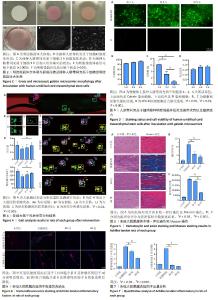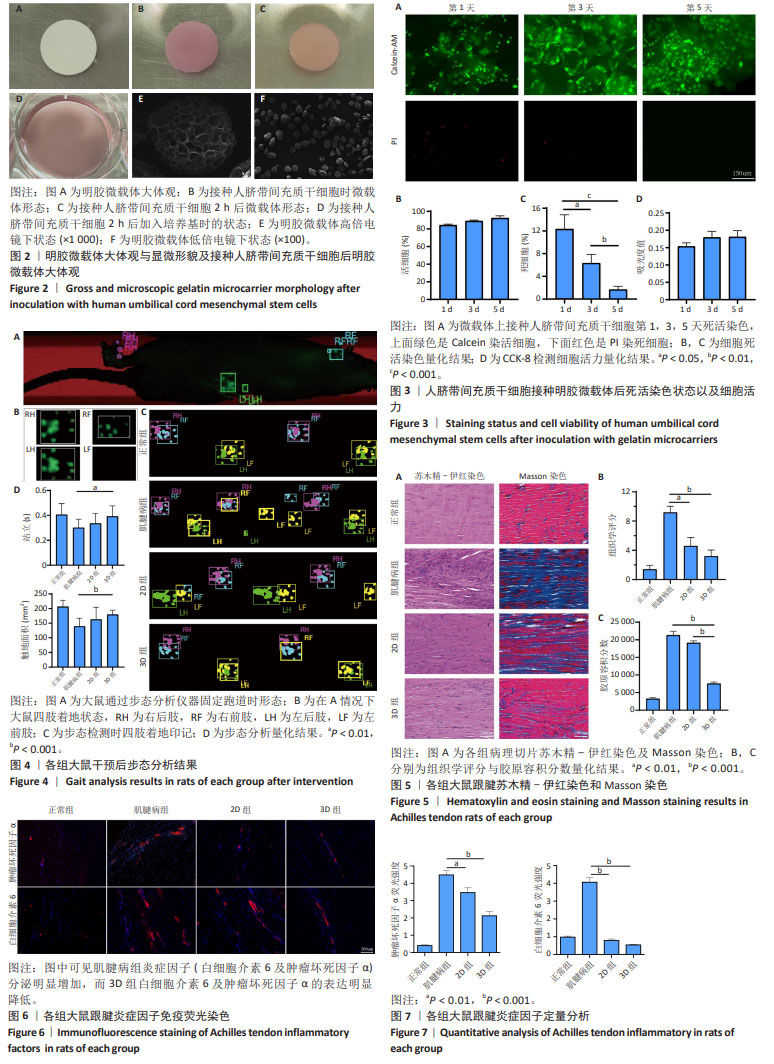[1] MILLAR NL, SILBERNAGEL KG, THORBORG K, et al. Tendinopathy. Nat Rev Dis Primers. 2021;7(1):1.
[2] LUI PP, CHAN LS, FU SC, et al. Expression of sensory neuropeptides in tendon is associated with failed healing and activity-related tendon pain in collagenase-induced tendon injury. Am J Sports Med. 2010; 38(4):757-764.
[3] DOCHEVA D, MÜLLER SA, MAJEWSKI M, et al. Biologics for tendon repair. Adv Drug Deliv Rev. 2015;84:222-239.
[4] CHILDRESS MA, BEUTLER A. Management of chronic tendon injuries. Am Fam Physician. 2013;87(7):486-490.
[5] VOLETI PB, BUCKLEY MR, SOSLOWSKY LJ. Tendon healing: repair and regeneration. Annu Rev Biomed Eng. 2012;14:47-71.
[6] AICALE R, BISACCIA RD, OLIVIERO A, et al. Current pharmacological approaches to the treatment of tendinopathy. Expert Opin Pharmacother. 2020;21(12):1467-1477.
[7] MAZZOCCA AD, CHOWANIEC D, MCCARTHY MB, et al. In vitro changes in human tenocyte cultures obtained from proximal biceps tendon: multiple passages result in changes in routine cell markers. Knee Surg Sports Traumatol Arthrosc. 2012;20(9):1666-1672.
[8] KOKUBU S, INAKI R, HOSHI K, et al. Adipose-derived stem cells improve tendon repair and prevent ectopic ossification in tendinopathy by inhibiting inflammation and inducing neovascularization in the early stage of tendon healing. Regen Ther. 2020;14:103-110.
[9] TANG Y, CHEN C, LIU F, et al. Structure and ingredient-based biomimetic scaffolds combining with autologous bone marrow-derived mesenchymal stem cell sheets for bone-tendon healing. Biomaterials. 2020;241:119837.
[10] TSUCHIYA A, TAKEUCHI S, WATANABE T, et al. Mesenchymal stem cell therapies for liver cirrhosis: MSCs as “conducting cells” for improvement of liver fibrosis and regeneration. Inflamm Regen. 2019; 39:18.
[11] TROYER DL, WEISS ML. Wharton’s jelly-derived cells are a primitive stromal cell population. Stem Cells. 2008;26(3):591-599.
[12] ROURA S, FARRÉ J, SOLER-BOTIJA C, et al. Effect of aging on the pluripotential capacity of human CD105+ mesenchymal stem cells. Eur J Heart Fail. 2006;8(6):555-563.
[13] WANG B, LIU W, LI JJ, et al. A low dose cell therapy system for treating osteoarthritis: In vivo study and in vitro mechanistic investigations. Bioact Mater. 2021;7:478-490.
[14] LIU H, YAN X, JIU J, et al. Self-assembly of gelatin microcarrier-based MSC microtissues for spinal cord injury repair. Chem Eng J. 2023;451: 138806.
[15] YANG Z, WANG B, LIU W, et al. In situ self-assembled organoid for osteochondral tissue regeneration with dual functional units. Bioact Mater. 2023;27:200-215.
[16] ZHOU T, YUAN Z, WENG J, et al. Challenges and advances in clinical applications of mesenchymal stromal cells. J Hematol Oncol. 2021; 14(1):24.
[17] DORON G, WOOD LB, GULDBERG RE, et al. Poly(ethylene glycol)-Based Hydrogel Microcarriers Alter Secretory Activity of Genetically Modified Mesenchymal Stromal Cells. ACS Biomater Sci Eng. 2023;9(11): 6282-6292.
[18] CHEN AK, REUVENY S, OH SK. Application of human mesenchymal and pluripotent stem cell microcarrier cultures in cellular therapy: achievements and future direction. Biotechnol Adv. 2013;31(7): 1032-1046.
[19] LOUBIÈRE C, SION C, DE ISLA N, et al. Impact of the type of microcarrier and agitation modes on the expansion performances of mesenchymal stem cells derived from umbilical cord. Biotechnol Prog. 2019;35(6):e2887.
[20] YAN X, ZHANG K, YANG Y, et al. Dispersible and Dissolvable Porous Microcarrier Tablets Enable Efficient Large-Scale Human Mesenchymal Stem Cell Expansion. Tissue Eng Part C Methods. 2020;26(5):263-275.
[21] 李帝均,王桂杉,刘海峰,等.肌腱病动物模型的研究进展[J].中国实验动物学报,2022,30(2):260-266.
[22] ZHANG H, CHEN Y, FAN C, et al. Cell-subpopulation alteration and FGF7 activation regulate the function of tendon stem/progenitor cells in 3D microenvironment revealed by single-cell analysis. Biomaterials. 2022;280:121238.
[23] MILLAR NL, MURRELL GA, MCINNES IB. Inflammatory mechanisms in tendinopathy - towards translation. Nat Rev Rheumatol. 2017;13(2): 110-122.
[24] OREFF GL, FENU M, VOGL C, et al. Species variations in tenocytes’ response to inflammation require careful selection of animal models for tendon research. Sci Rep. 2021;11(1):12451.
[25] JIAO X, ZHANG Y, LI W, et al. HIF-1α inhibition attenuates severity of Achilles tendinopathy by blocking NF-κB and MAPK pathways. Int Immunopharmacol. 2022;106:108543.
[26] ACKERMAN JE, BEST KT, MUSCAT SN, et al. Metabolic Regulation of Tendon Inflammation and Healing Following Injury. Curr Rheumatol Rep. 2021;23(3):15.
[27] LEE SY, KWON B, LEE K, et al. Therapeutic Mechanisms of Human Adipose-Derived Mesenchymal Stem Cells in a Rat Tendon Injury Model. Am J Sports Med. 2017;45(6):1429-1439.
[28] RODAS G, SOLER-RICH R, RIUS-TARRUELLA J, et al. Effect of Autologous Expanded Bone Marrow Mesenchymal Stem Cells or Leukocyte-Poor Platelet-Rich Plasma in Chronic Patellar Tendinopathy (With Gap >3 mm): Preliminary Outcomes After 6 Months of a Double-Blind, Randomized, Prospective Study. Am J Sports Med. 2021;49(6): 1492-1504.
[29] XUE Y, KIM HJ, LEE J, et al. Co-Electrospun Silk Fibroin and Gelatin Methacryloyl Sheet Seeded with Mesenchymal Stem Cells for Tendon Regeneration. Small. 2022;18(21):e2107714.
[30] CHEN G, ZHANG W, ZHANG K, et al. Hypoxia-Induced Mesenchymal Stem Cells Exhibit Stronger Tenogenic Differentiation Capacities and Promote Patellar Tendon Repair in Rabbits. Stem Cells Int. 2020; 2020:8822609. |

